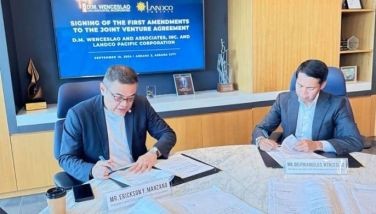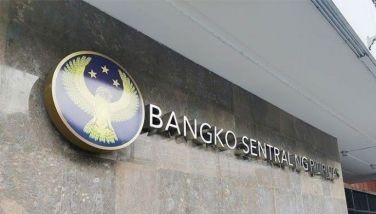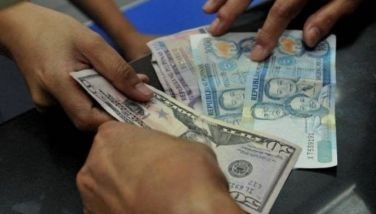The Diosdado Macapagal International Airport at Clark and the Mactan Cebu International Airport are the two fastest growing airports in the country today…
Last year on October 12, a Cebu Pacific Airbus 319 aircraft took off from Mactan Cebu International Airport and landed at the Diosdado Macapagal International Airport at Clark, after an hour and 15 minutes. Since then, the two great airports have been connected.
Actually these two airports have many things in common. They were both US Air Force bases. Many fighter, bomber, reconnaissance and medium to heavy lift transport aircraft took off from their runways to perform a wide spectrum of intra to cross theatre operations in defense of freedom in the Pacific and the Middle East. Then after the US forces left, the Philippine Air Force took over, and gradually, commercial and general aviation came in and hastened their development.
Clark Air Base
Before Clark became the second largest US Installation in the world, it was an army cavalry outpost named Fort Stotsemberg in 1903. It was made into an air field and was named Clark airfield in 1919. Finally it became Clark Air Base, the home of the 13th Air Force. The developed area alone was 4,400 hectares and the sub zone area, 27,600 hectares. Clark was turned over to the Philippine government in November 1991.
The best years of my life as an air force pilot were those at Basa Air Base, the “Roost of the Fighters”. I spent 13 years there flying high performance fighters and trainers and, together with our US counterparts from Clark and Subic, ruled the skies of Luzon. We often broke the serenity of dawn with afterburning jet engines and flew endless sorties of air defence and bilateral Cope Thunder exercises, landing and taking off from these three air bases, just 12 nautical miles apart from each other.
I remember hearing the thunderous sound of jet engines from dawn to dusk and even through the late evenings. Even the smell of JP4 Jet Fuel was already a part of our routine. Early morning briefings, coffee mugs in hand, aircraft 360 degree inspections, and final strap in by the crew chiefs, as we clip secure our shoulder harness and parachutes, helmets on and visors down, and feel the start up of the engine compressors…and then feel the rush of 100 percent oxygen through our masks…those were the best of times.
In fact the first time I saw the Rice Terraces at Banaue, was from the cockpit of an F-5 Freedom Fighter, flying wing with the Squadron Commander of the 6th Tactical Fighter Squadron, then Lieutenant Colonel Dulinayan. The 5th Fighter Wing at Basa had close to 50 fighter aircraft then – a mixture of Vought F-8H Crusaders, Northrop F-5A/B Freedom Fighters, North American F-86 Sabres and Lockheed R/T-33As Thunderbirds.
In Clark, the US Third Tactical Fighter Wing then had 60-68 F-4E Gunner Phantoms, F-4G Wild Weasels and the F-5E/F Aggressor Tigers. At Naval Air Station Cubi in Subic Bay, they had carrier aircraft in and out for training and exercises. Royal Thai Air Force F-5Es, New Zealand A-4 Skyhawks and Singaporean Hawker Hunters flew in too to Clark for Cope Thunder.
It was a noisy sky – the Sound of Flight, the Sound of Freedom.
That was 16 years ago. After Pinatubo erupted and the Mutual Bases Agreement subsequently terminated, the skies suddenly became silent. In the meantime, the runways at Clark remained unusable for so many years.
A couple of years after, Clark was named Clark Special Economic Zone and by 2001, the airport was renamed Diosdado Macapagal International Airport. Today the skies are beginning to be filled again with the familiar sounds of jet engines. United Parcel Service chose Clark as its Intra-Asia Hub, with 60 express freight flights weekly. UPS ‘Brown Tail’ B757s, B767s and MD11s as well as PEAC B 727s and Yangtze River Airways B737s take off from Clark daily. For passenger flights, Asiana Airbus 320s and B767s, Air Asia B737s, Tiger Airways A320s, Cebu Pacific A319s, Asian Spirit Bae146s and SeAir Dornier228s fly in and out of the airport. By the end of the year, the target 70 flights a week for international passenger flights will be met.
And while Basa Air Base is still closed, military aircraft also fly from Clark, as it still is the host base for Bilateral and Multilateral Treaty activities.
In August of 2005, the Gateway 2015 Master Plan for the Diosdado Macapagal International Airport at Clark was approved and signed by the members of the Clark International Airport Corporation Board of Directors. This roadmap guides the development of this airport into making this the Main Gateway by 2015.
* * *
E-mail: [email protected]

















